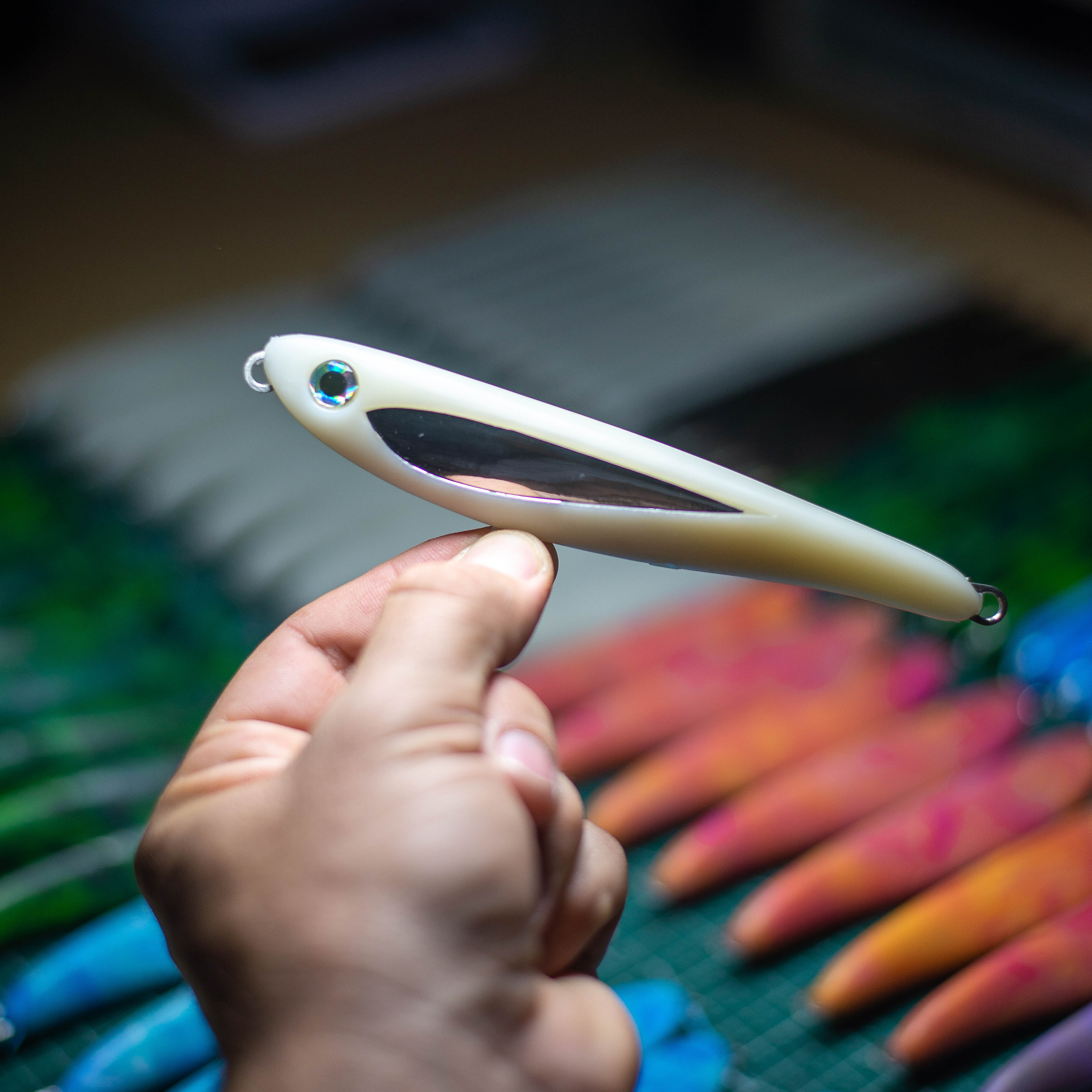
Wayward Fishing
The idea for Wayward Fishing was born from my love of fishing and the many things it brings to my life. As an avid consumer of fishing tackle, I’ve seen firsthand the waste created by the industry and felt that we could do better. The tackle industry, which profits from the ocean and our waterways, should be a stronger advocate for their protection, actively seeking to leave as little impact as possible. Since I didn’t see anyone embracing the better practices I envisioned, I decided to take matters into my own hands and give it a go myself.

THIS ISN'T AS EASY AS I THOUGHT
IN THE BEGINNING
The idea of making lures from recycled plastic came to me after a fishing trip where I lost over a dozen lures to tackle failures, sharks, and my own mistakes. As I left the water, I couldn’t shake the guilt of leaving behind so much lead and plastic in the ocean, and I knew there had to be a better way. I started researching the possibilities, even buying some tools and materials, but the project eventually fell by the wayside.
Years later, becoming a dad reignited my passion for the idea. The thought of creating something better for the ocean—something my children could be proud of—gave me the push I needed to try again. This was the spark that set me on the path to making sustainable lures a reality.

WAYWARD IS BORN
THE BOTTLE ROCKET
The Bottle Rocket (now known as the Bottle Rocket 155) was the first lure that showed real promise in my journey toward creating sustainable fishing tackle. As I delved into working with recycled plastic, I began to understand the manufacturing techniques and possibilities that came with it. It soon became clear that I had the foundation for a functional and effective lure but still needed some refining. It was at this point I decided to see if anyone else might be interested in the idea and thus Wayward Fishing was born in July of 2023.

FOR THE LOVE OF FISHING
WAYWARD TODAY
Wayward Fishing began as a simple idea fueled by a love of fishing and a desire to make a difference. Today, it’s a brand dedicated to leaving a lasting positive impact—not just on the fishing industry, but on the fisheries themselves. Driven by the belief that future generations deserve to experience the joy of fishing, we operate with a clear purpose: crafting high-quality products here in Australia while actively reducing the environmental footprint of anglers. At Wayward, everything we do is #fortheloveoffishing, ensuring our passion benefits both the sport and the natural world that sustains it.

FOR THE LOVE OF FISHING
WHERE ARE WE HEADED
The future of Wayward Fishing is filled with exciting possibilities. While the primary focus remains on crafting lures from recycled plastic, I’m eager to expand the range and explore innovative ways to create tackle with a better environmental outcomes. This includes experimenting with more sustainable materials, enhancing production efficiency, and even developing biodegradable alternatives. These efforts may come with challenges, like higher costs or material limitations, but the opportunity to lead by example and drive meaningful change in the industry makes this journey both necessary and worthwhile.
SUBSCRIBE TO THE NEWSLETTER
Get updates on promos, new product drops and more!
Unlock Free shipping
Free shipping on all orders over $90
Easy Secure Checkout
Our secure checkout is quick and easy to use.
Plastic Free Packaging
We have enough plastic to recycle, we don't need to make more.
